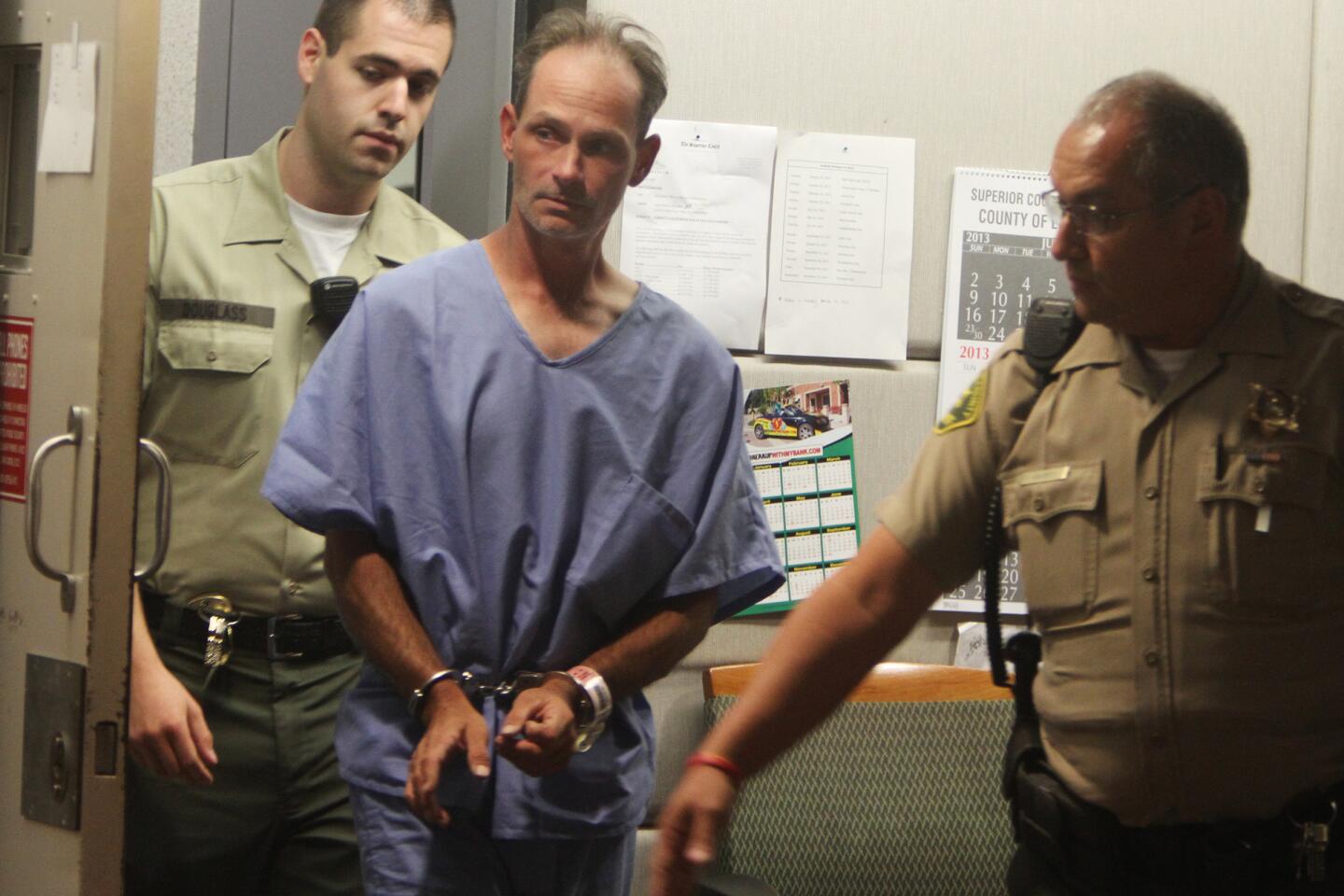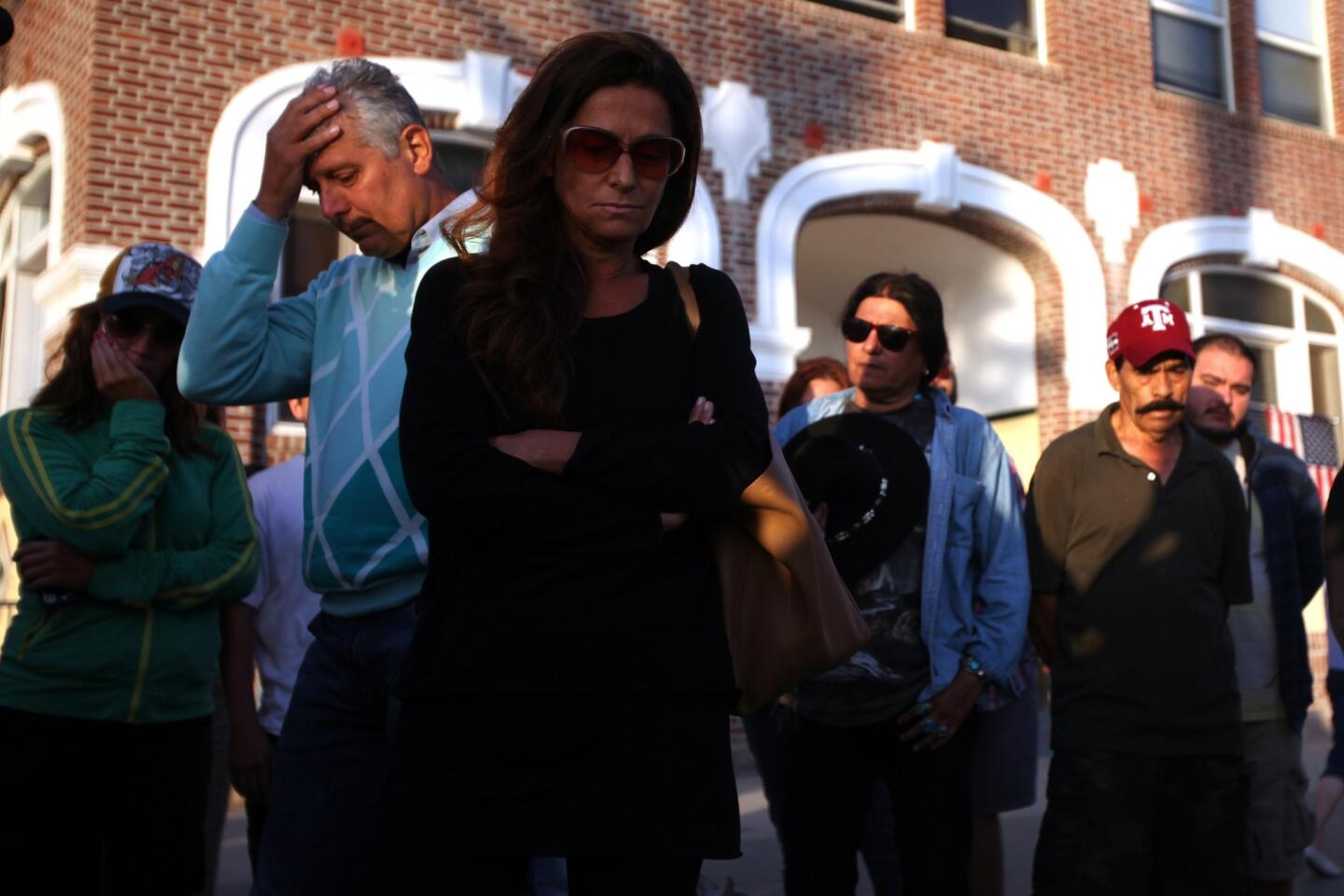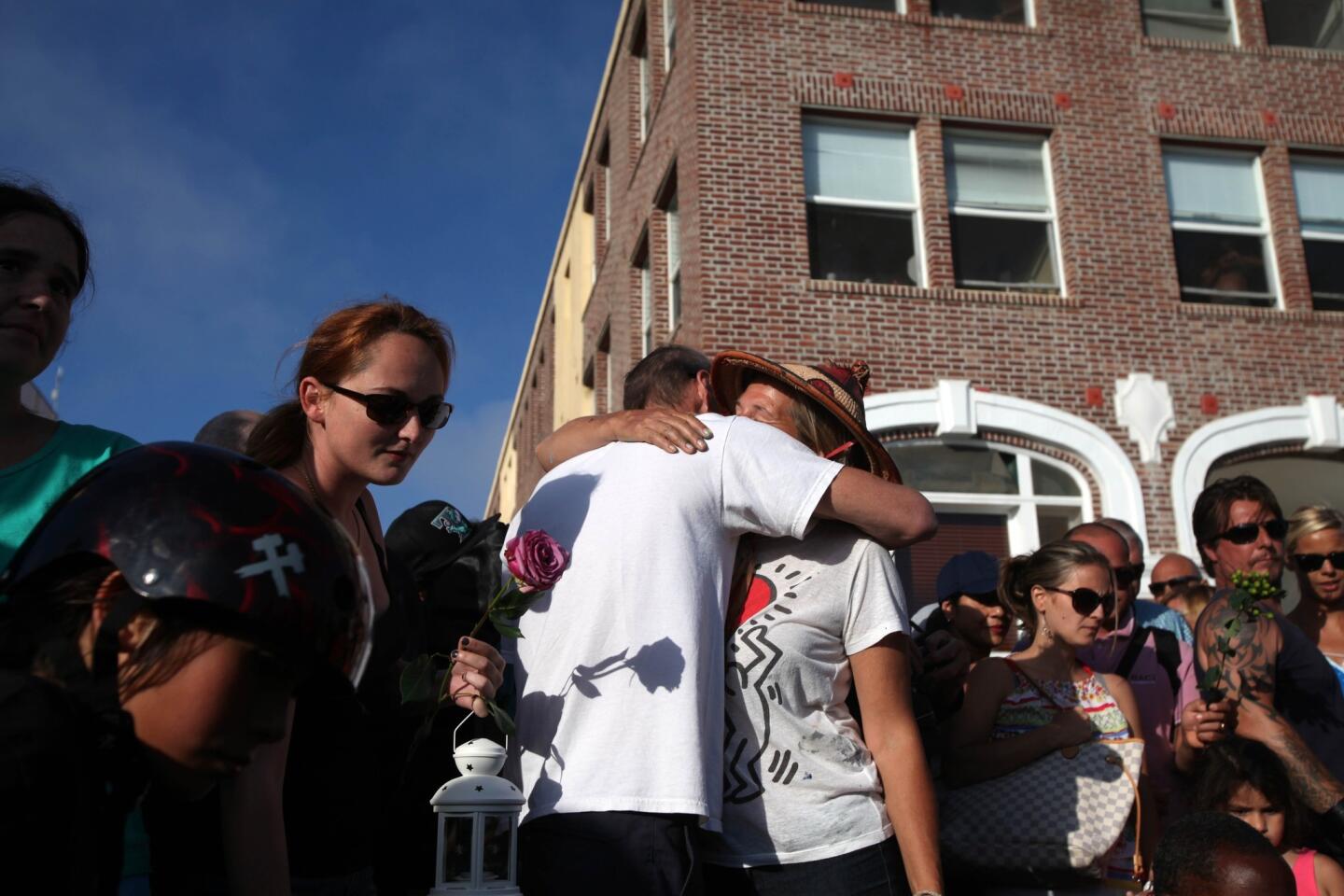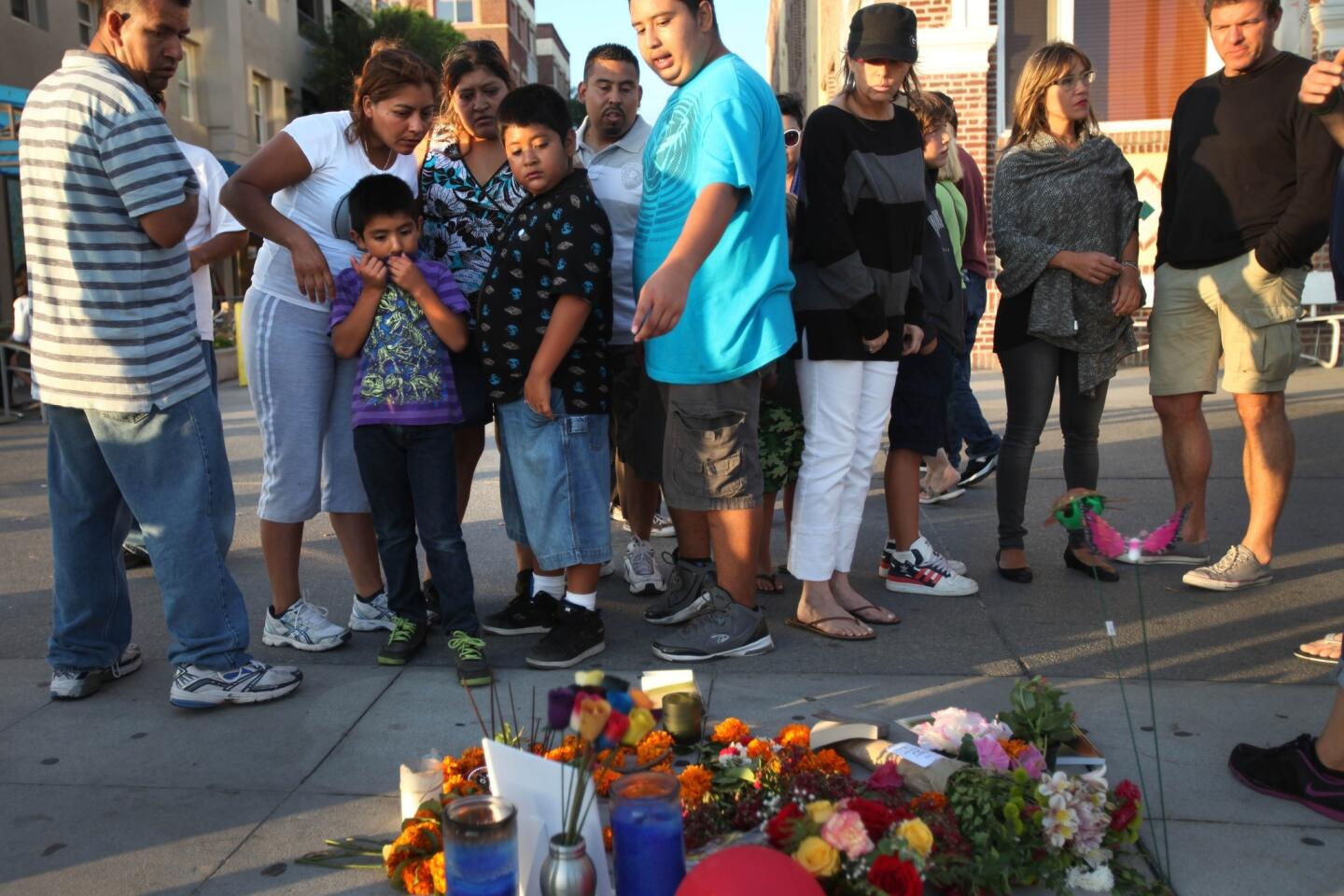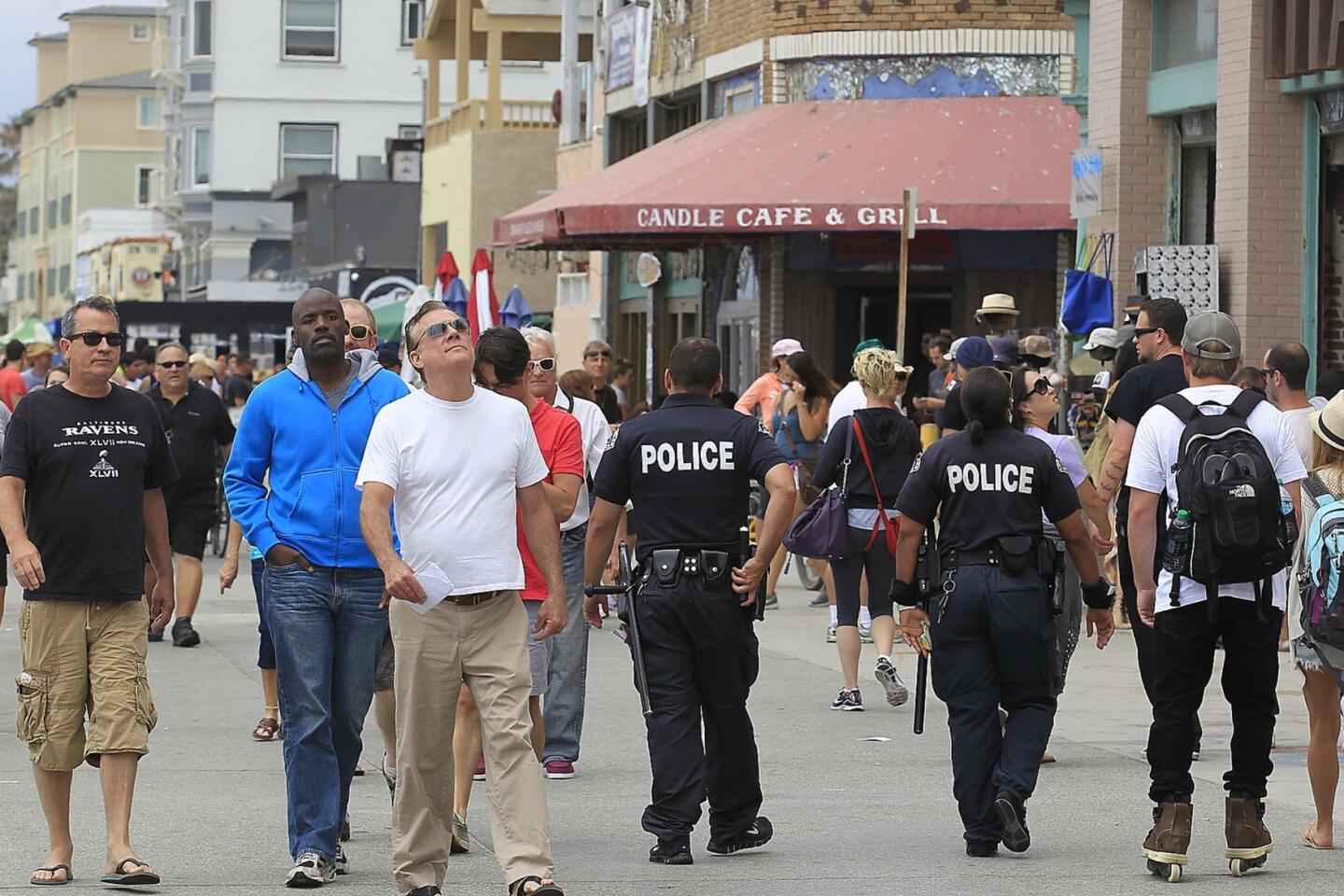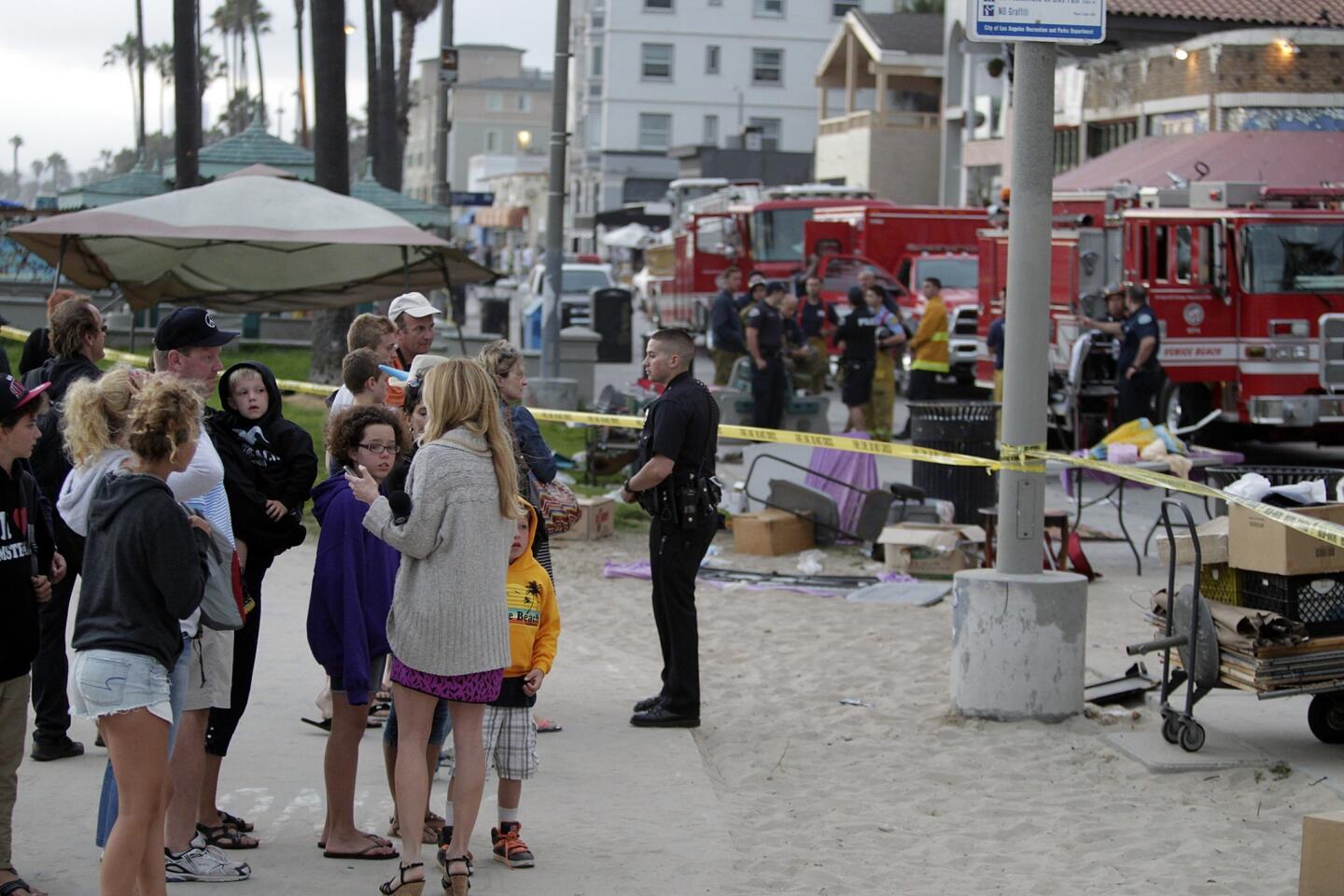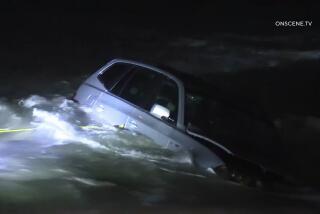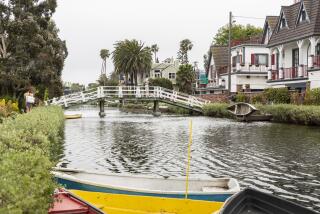After Venice crash, locals are mixed on proposed safety measures
As local vendors, residents and visitors returned to Venice’s famed boardwalk this week, some people mulled suggestions by city officials about how to make their prized street scene safer after a hit-and-run crash killed a woman and left 16 other people injured.
And as is often the case in Venice, the locals didn’t always agree.
The Los Angeles City Council voted Tuesday to install temporary traffic barriers at the Venice Boardwalk.
Saying the neighborhood is “shaken” by the incident, Councilman Mike Bonin asked his colleagues to instruct various city agencies to place the temporary barriers at the most hazardous intersections along Ocean Front Walk until a permanent strategy for keeping vehicles away from pedestrians is developed.
The council called for city officials to produce a safety assessment for the boardwalk within 14 days. A study will also look at proposals for more street lighting, installation of a public address system and expanded surveillance cameras along the walkway.
Although four poles were on Dudley Avenue to block vehicles from Ocean Front Walk, the suspect in Saturday’s crash swerved around them by driving on the sidewalk and then into the crowd.
Alice Gruppioni, a 32-year-old Italian woman who was on her honeymoon, was killed in Saturday’s crash. Police arrested Nathan Louis Campbell, 38, on suspicion of murder. He was charged Tuesday with nearly three dozen felony counts, including murder.
Earlier this week, as Bonin was visiting the boardwalk and began floating his ideas, some vendors balked at what they perceived as additional regulation.
“The immediate response is — ‘We have to do something, so now we put barriers.’ But it’s just a temporary fix to make ourselves feel better,” said artist Shelly Gomez, 52, who set up a canvas where people could paint their messages to Gruppioni. “The truth is, we are safe. Look at how long the boardwalk has been here, and this has never happened.”
Jeff and Esther Melczer, a husband and wife from Mar Vista, spent part of their Monday inspecting the narrow slice of sidewalk and street that Campbell allegedly slipped through.
Esther, 65, gestured incredulously at the yellow poles that had failed to bar entry.
“It’s a freak accident as far as I’m concerned,” Jeff, 66, said. “If someone wants to go crazy down here, they’re going to go crazy.”
A few yards down, Scott Levinsky braided a girl’s raven-colored hair with strings of bright pink and purple. Levinsky, who was selling his crafts Saturday when the incident occurred, was all for another pole where the car entered Dudley Avenue on Saturday, or perhaps a chain link or other measure.
“A few adequate signs would really make a difference,” he said. “You have to have it clearly marked that you’re not supposed to drive on the boardwalk. A lot of people come here from out of town and don’t know that.”
Levinsky and the Melczers both expressed particular concern about an entryway on Rose Avenue. Just a few streets north of where the rampage began, motorists must cross the boardwalk briefly before sliding into a beachfront parking lot.
But on Monday afternoon, a sign at the entrance declared “lot full.” Consequently, a gold Honda Pilot crept onto the side of the boardwalk to make a U-turn, a white Audi chose to pull into the lot and go around, and a woman in a Toyota SUV got stuck at the exit, waiting and waiting for people to stop milling about in front of her.
When she saw an opening, she punched the gas and sped away.
“It’s a free for all,” quipped Kendra Adler, 22, from her post at Venice Ale House across the street. In part because of all the pedestrian foot traffic generated by the restaurant, she said she supported automated bollards that could come down for emergency vehicles.
But Rose Avenue is far from the only potential entry way. Nearly 30 streets and alleys deliver cars to Ocean Front Walk and few have traffic barriers, Bonin said.
Some have signs that say “vehicles prohibited,” “do not enter,” and “end,” but a compact car could easily slide to the left or right of such signs. A driver could also drive straight down Brooks Avenue and not encounter a barrier until the set of public restrooms on the beach.
“As many as 15 or 20 times a day, people accidentally drive onto Ocean Front Walk, putting life and property at risk,” Bonin said.
Aaron Collins, 42, came to the boardwalk Monday to visit the memorial when he heard news of the rampage on TV. The South-Central L.A. resident took a seat on a bench near the makeshift display of candles, flowers and signs for Gruppioni.
Much of the day, he read silently from a religious pamphlet. But he lept from his seat when a SmartWater bottle that was serving as a vase for white flowers got knocked over.
He propped it upright again, gave it two gentle pats, then returned to the bench.
He said he wasn’t in favor of any more barriers, but offered an alternative solution.
“This is supposed to be an area where tourists come from all over the world. One sick person shattered that innocence,” Collins said. “Coming from a spiritual perspective, I guess you can just pray more.”
ALSO:
Venice crash: Colorado man charged with murder, assault¿
Venice crash: A noisy moment of silence at tourist hot spot
In wake of Venice crash, L.A. council backs new boardwalk barriers
Twitter: @MattStevensLAT
More to Read
Start your day right
Sign up for Essential California for news, features and recommendations from the L.A. Times and beyond in your inbox six days a week.
You may occasionally receive promotional content from the Los Angeles Times.
